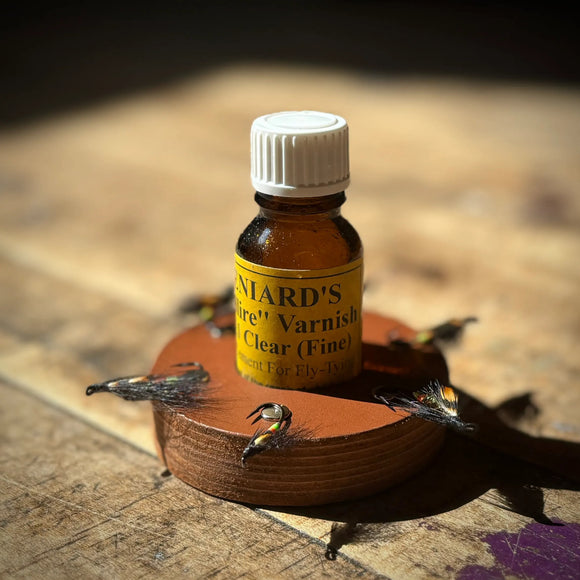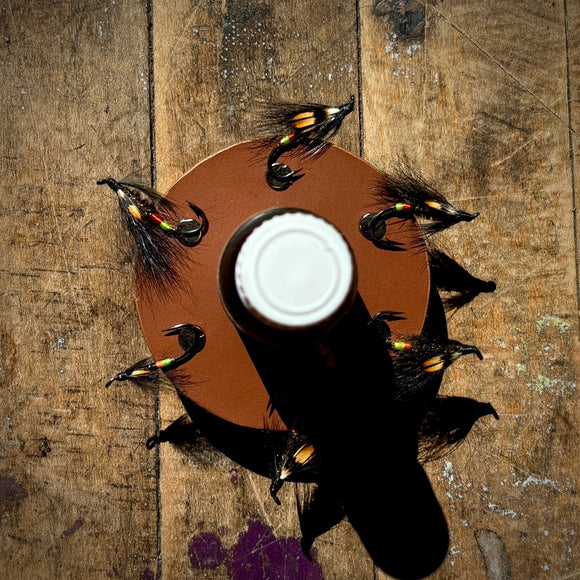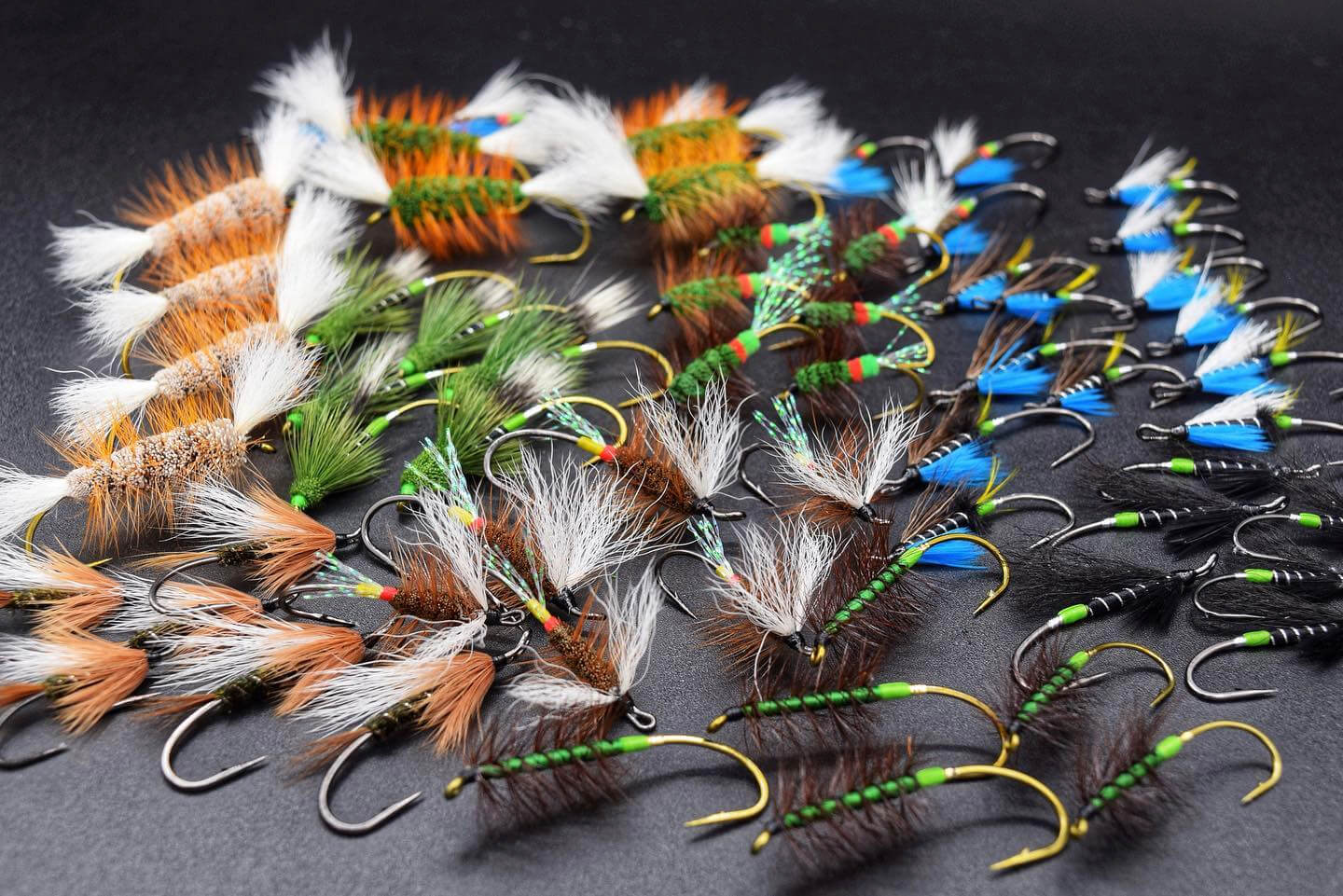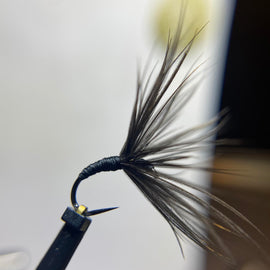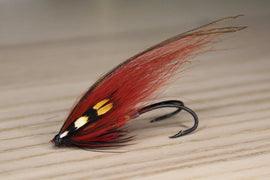With the 2022 Atlantic Salmon season upon us, albeit the first week, I have been perusing my fly boxes to make sure I am well equipped with my favourite flies. As my hand runs across each fly, I look for the special ones that I seem to keep going back to. There are dozens of patterns in the boxes. Some have never seen the water, and some never will. Some were traded, some were bought, some were found, and most are tied by myself. Customers often say, “I have a budget of “X” can you tie me some of your favourites?” The following 6 flies are most always included in those orders, and for good reason.
These flies have proven to produce in a multitude of situations. Early morning light, midday, and twilight. Days where the light is low and hampered by clouds. Days where the sky is blue and the sun is beating down on the water. High water, low water, clear water, tannin water…you get the point. The flies work. And for that reason, they are my starting lineup.
#1 - The Blue Charm.

The first fly in my starting 6 is the Blue Charm. This is likely the most tied, most fished, and most varied fly you will see in an angler’s box here in Newfoundland. White wing (tied with calf tail, calf body, white moose, or goat), grey squirrel, dark wing (typically moose), green butts, red butts, yellow butts, golden butts, chartreuse butts, with and without krystal flash, collared or throat; the options are endless. For me, my go-to Blue Charm pattern has a white wing and a green butt. I’ll keep these in a range of sizes from 2 – 12. My standard wet hook of choice for this fly is the Partridge Of Redditch M2. When tied on the M2, I ensure there is enough room front of the head to tie a half hitch to drive the fly to the surface to entice a strike. I’ll also keep some tied on a Partridge PWW. I know, this doesn’t sound right. Trust me though. It works. The PWW offers a wide gape, short shank, and a strong hook. Take my word on it…tie some for yourself.
#2 - The Green Body Cosseboom.

Next up for me is a fly that was given to me many years ago by a great friend, and fellow angler/fly tyer. He was with me the night that I hooked my very first Atlantic salmon, and to him I owe the passion I have for Atlantic salmon fishing. The Green Body Cosseboom. This particular pattern we find most effective tied small. Oddly small sometimes, however for Atlantic Salmon it has been proven to be quite productive. Fished most often sub surface, the strike from the salmon is violent. Oftentimes hookset is unnecessary as the fish, from striking the fly so savagely, hooks itself. The foundation for this pattern is varied in my box. I like to use the Partridge G3A/L, PWW, and the G3AL/Y.
#3 - The Bomber.

Number 3 for me is a pattern that is also widely varied. The Bomber. My favourite version is tied with white calftail for the tail and wing, a chartreuse deer hair butt, bright green deer body trimmed to shape, a black hackle, and a green head. Bombers come in all sorts of shapes, sizes, and colour combinations, and salmon will readily strike! Dry fly takes from feisty Atlantic salmon are very explosive and this style of fly when skated or dead drifted entices the salmon to throw caution to the wind and attack the fly. The hook of choice for bombers is the Partridge CS42 in sizes 2-10.
#4 - The Come By Chance Green Machine.

Number 4 is a pattern created by Lorne Watton of Come By Chance, a small community approximately an hours’ drive from the capital city of St. John’s. The Come By Chance Green Machine. A simple pattern to tie with just 4 materials completing the fly. It mimics the style of a buck bug, without the deer spun body. This pattern is dressed as follows: Gold mylar tag, green uni stretch butt, Kelly Green (or similar) floss wound tight around the hook to form the body, and brown hackle is palmered over top. This fly is fished wet, and with the right amount of hackle wraps, it will fish just sub surface and fish find it irresistible. I like these tied on the heavy G3A/L, but will also use the G3AL/Y.
#5 - The Paddy Francis

5th in line for me would have to be the Paddy Francis. To some, an abomination. But to those that fish it, it has saved many an angler from the stench of skunk. Another simple pattern with only 2 materials. Calf tail for the tail, a deer spun body trimmed very tight, and a calftail wing. This is a pattern that comes in many colour combinations with the more popular being green, natural, blue, white, black, and my personal favourite being purple. Some tyers will tie coloured butts, add flash to the wing and tail, split the wing so as that it lays down each side of the fly, and perhaps my favourite variation which takes a collar from a cosseboom – creating the Paddyboom! This was created by a great friend and fellow tyer. I have some of those in my kit too. Don’t let the fly fool you. It works, and works very well. A necessity for your kit! I prefer to use the G3AL/Y and G3A/L for my Paddy Francis’.
#6 - The Buck Bug

Last up for me is the buck bug. As with the bomber, these are tied and fished in a variety of ways. Green machine style with closely trimmed deer spun bodies or heavy gauge hooks, or tied to fish dry on a G3A or CS42 with a cigar shaped body and hackle to float. These flies always have a special place in my box. Bright colours with flash, and more natural colours all tend to work well and should have a spot in your fly box. Tied wet, I like to use the G3AL/Y or G3A/L, and to fish dry I like to use the G3A and CS42 for a larger offering.
So there you have it. The secret is out. My top 6 flies above have put a smile on my face and a line tight many times. I wish you all well during the 2022 season and hope that you find a special little piece of water, with a fish ready to snatch one of YOUR top 6 from the surface (or sub-surface 😉).
FLIES
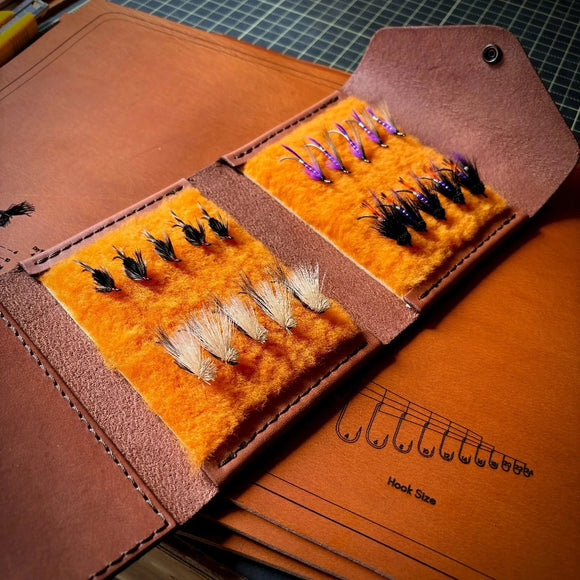
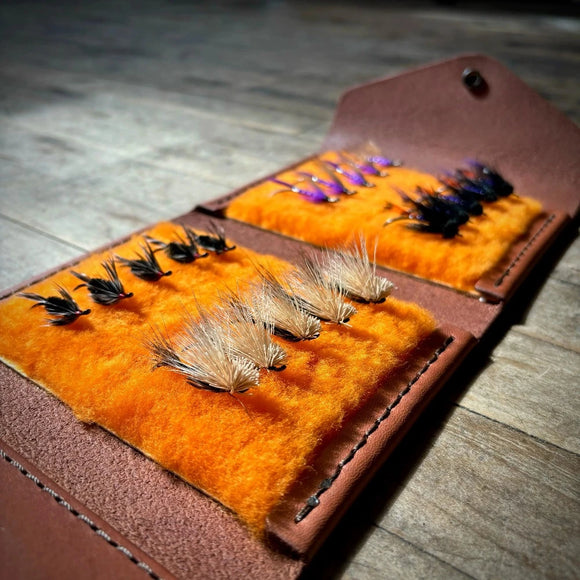
Steelhead Fly Pack
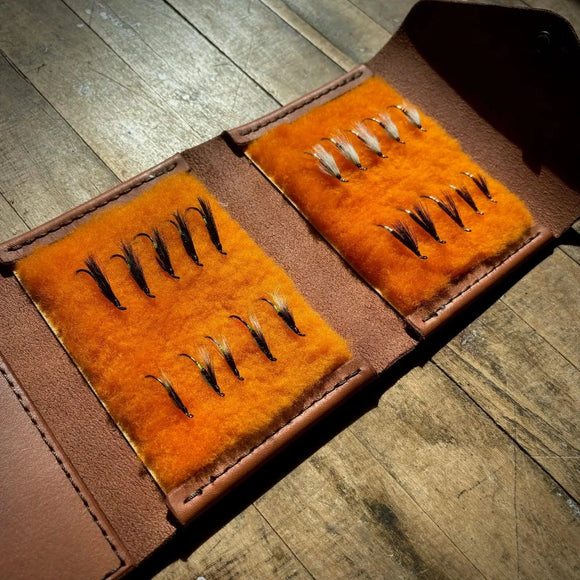
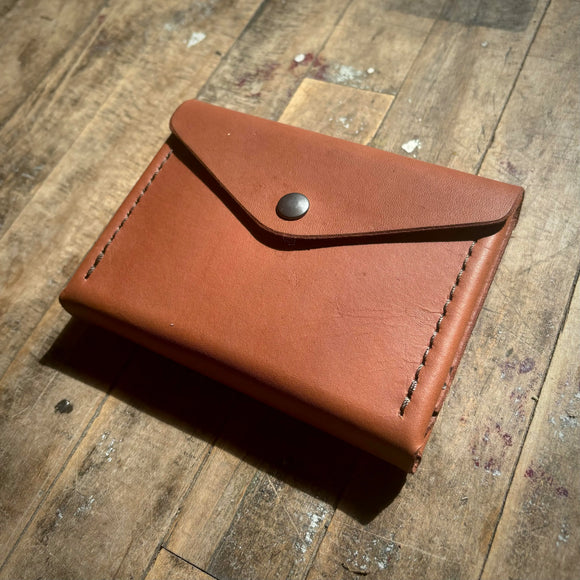
Salmon Fly Pack - #1
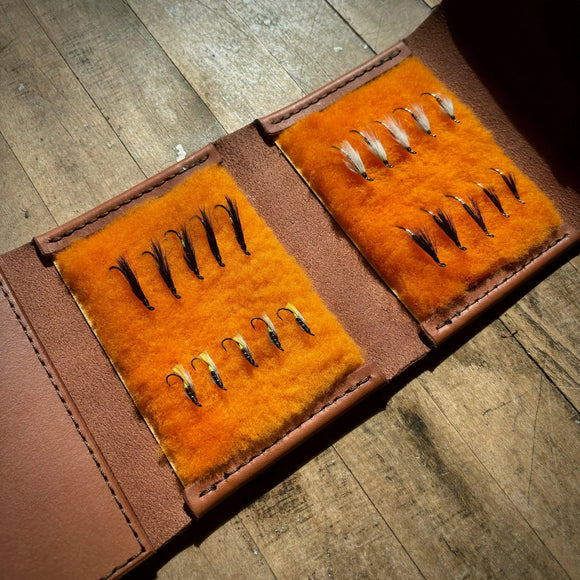
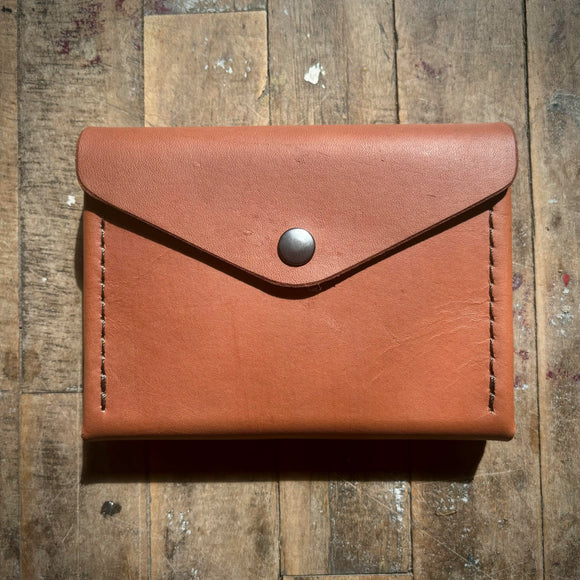
Salmon Fly Pack - #2
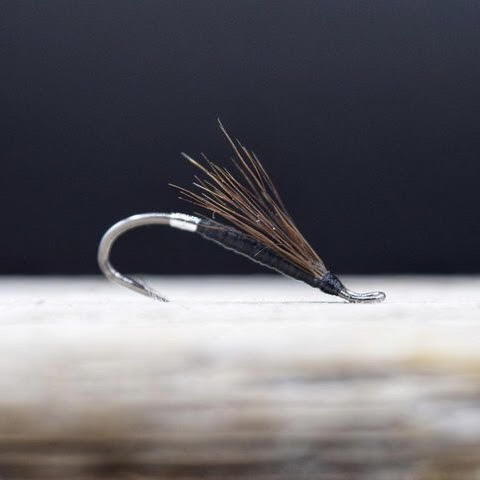
Black Silver Tip
FLY TYING
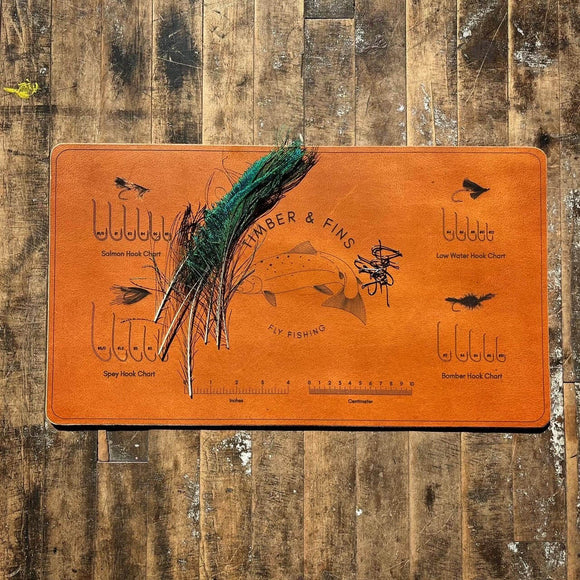
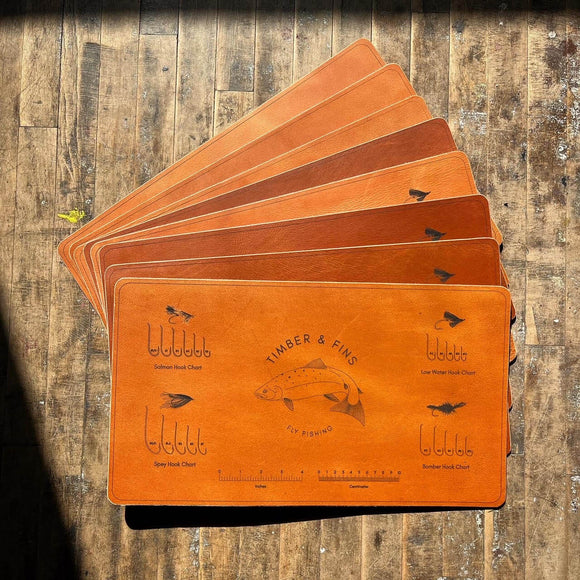
Salmon Fly Tying Leather Mat
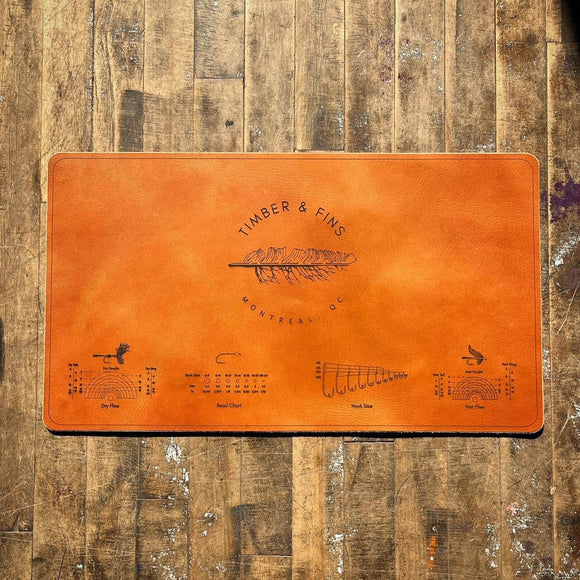
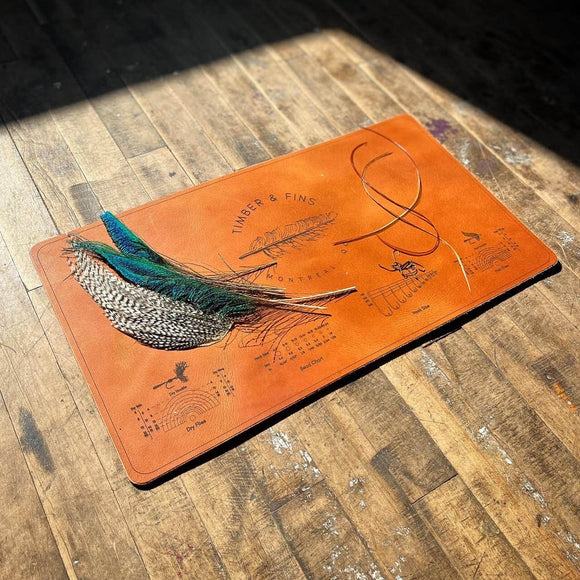
Fly Tying Leather Mat
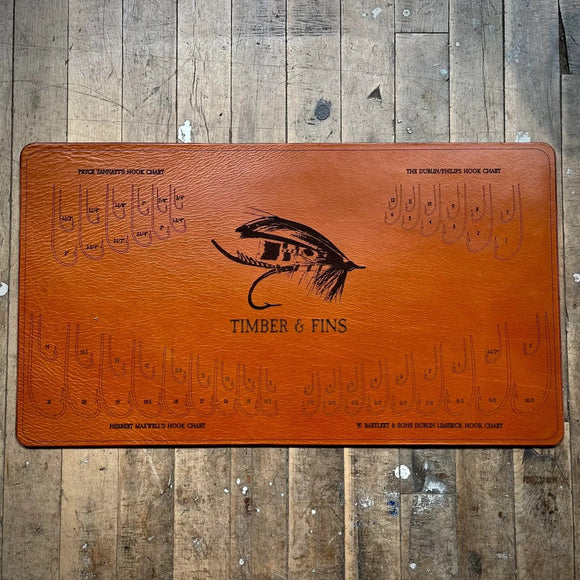
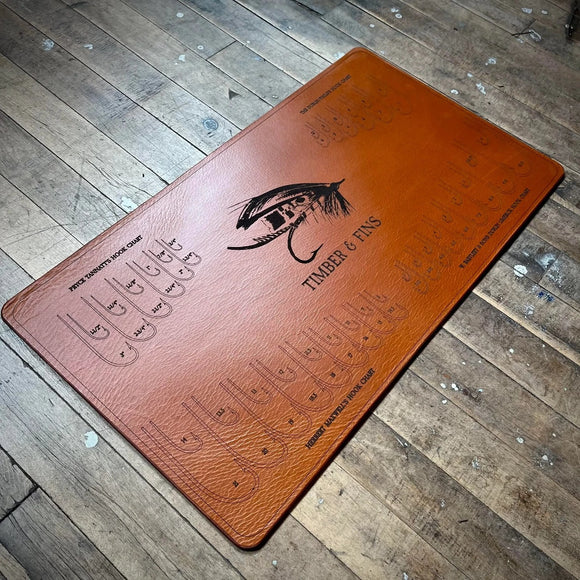
Heritage Fly Tying Leather Mat
